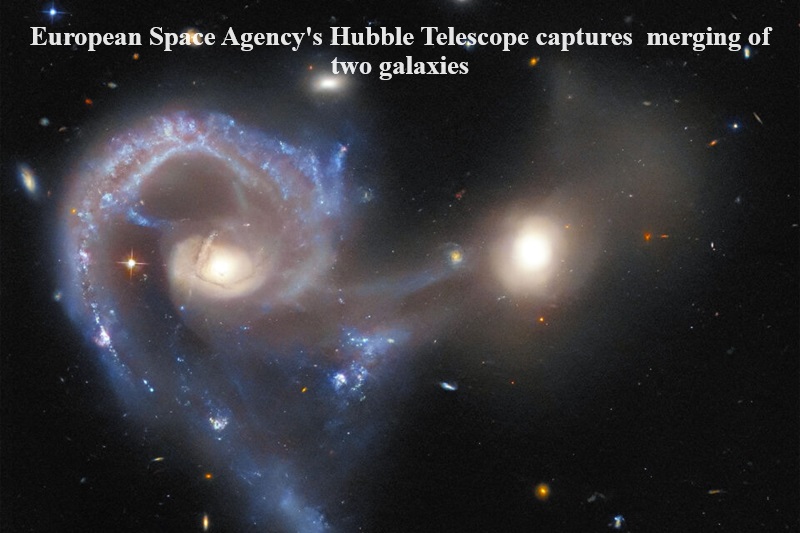
The most significant planetary collision in Earth’s history, to date, involved an asteroid that struck millions of years ago, leading to the extinction of dinosaurs. Fortunately, it remains the only large-scale collision our planet has experienced thus far. However, when considering the vastness of the universe, filled with celestial bodies much larger than Earth, and contemplating galactic collisions, the scale becomes mind-boggling.
A recent image captured by NASA and the European Space Agency’s (ESA) Hubble Space Telescope depicts a collision or merger between two galaxies, each containing millions of stars and planets. Shared by the ESA on X (formerly Twitter) on January 8, the image features ‘Arp 122,’ showcasing the ongoing merger of two galaxies.
The upper part of the merger displays the galaxy NGC 6040, a spiral galaxy currently undergoing warping due to the merger. Directly below is LEDA 59642, another spiral galaxy visible in a ‘face-on’ position. The colossal size of galaxies contributes to the lengthy duration required for such mergers to complete—millions and millions of years. The vast number of stars, planets, gas, and dust in galaxies necessitates a slow and extended process to seamlessly integrate with the corresponding components of the other galaxy.
Galactic mergers are complex events, taking place over millions of years due to the immense distances and the intricate dynamics involved. Even our Milky Way Galaxy is set to merge with the Andromeda galaxy, but this process will not commence for another four billion years. The complete merger will take hundreds of millions of years, resulting in a transformed galaxy devoid of the familiar spiral arms associated with the Milky Way.

Post Your Comments